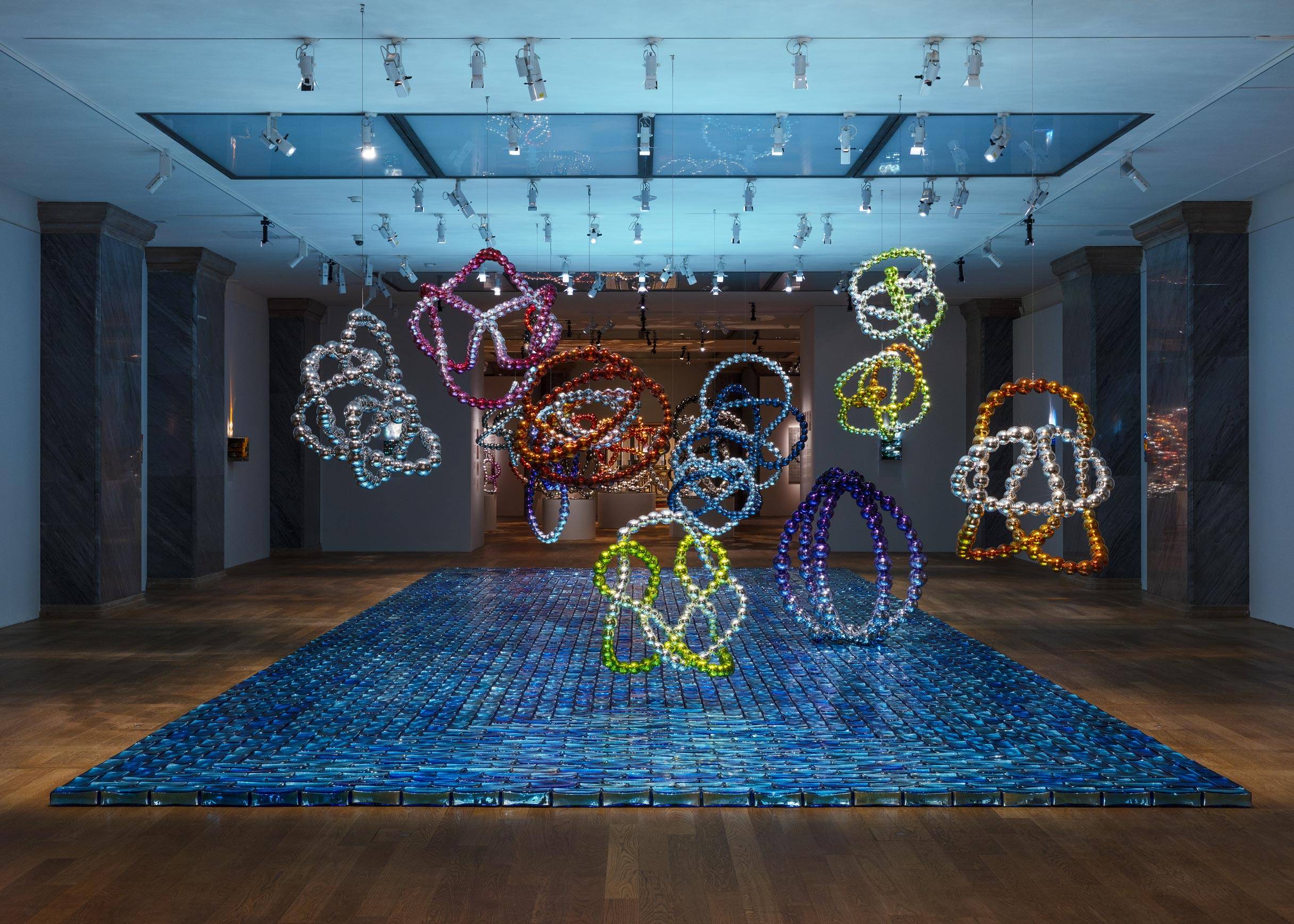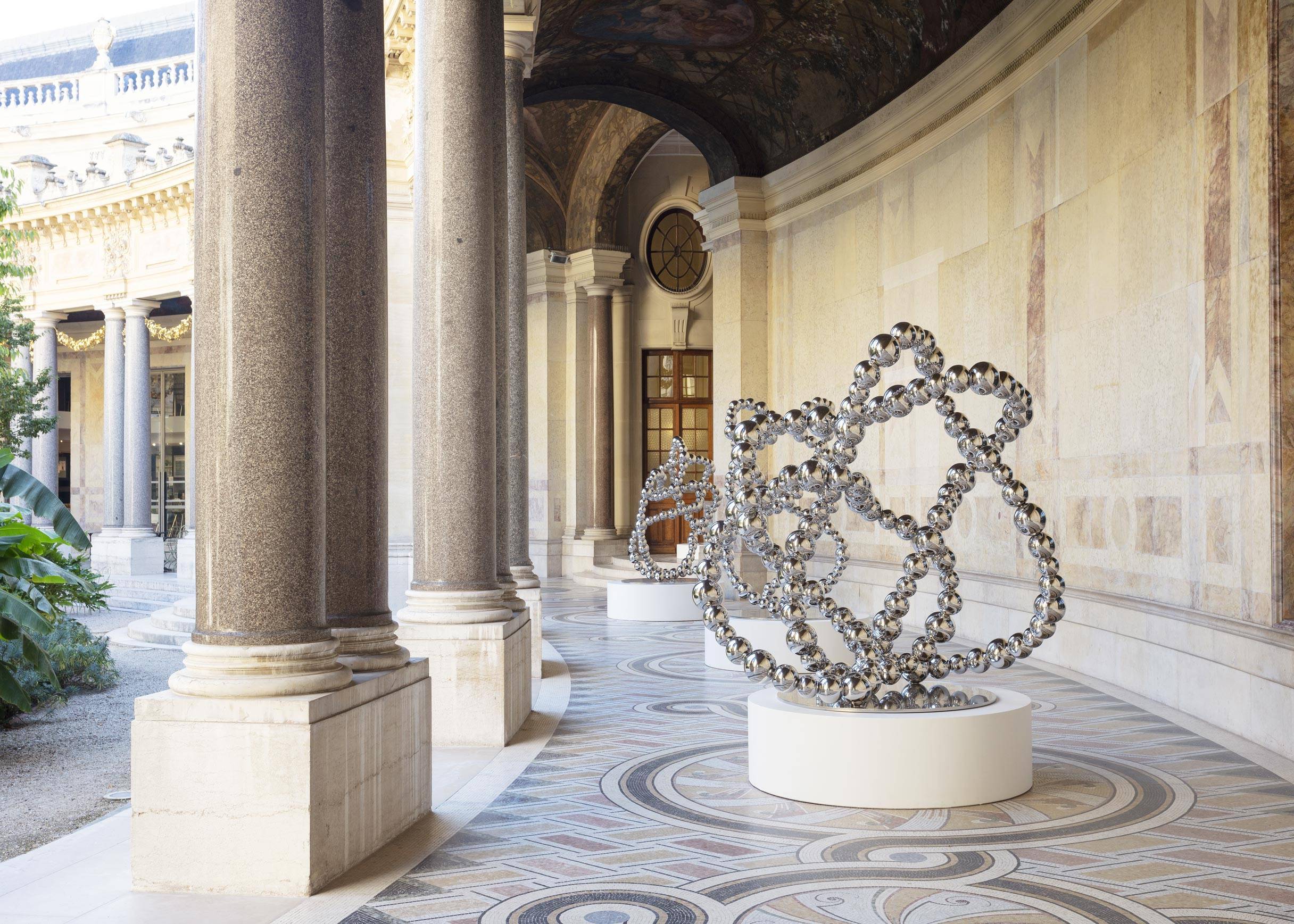
14
Jean-Michel Othoniel reenchants the Petit Palais with his art of wonder
Ten years after his retrospective at the Centre Pompidou, the French artist offers with his exhibition The Narcissus’ theorem, in the Petit Palais and its garden, an ode to beauty, a haven of peace intended to cure us of the troubles of time. Guided tour.
Published on October 14, 2021. Updated on May 31, 2024.
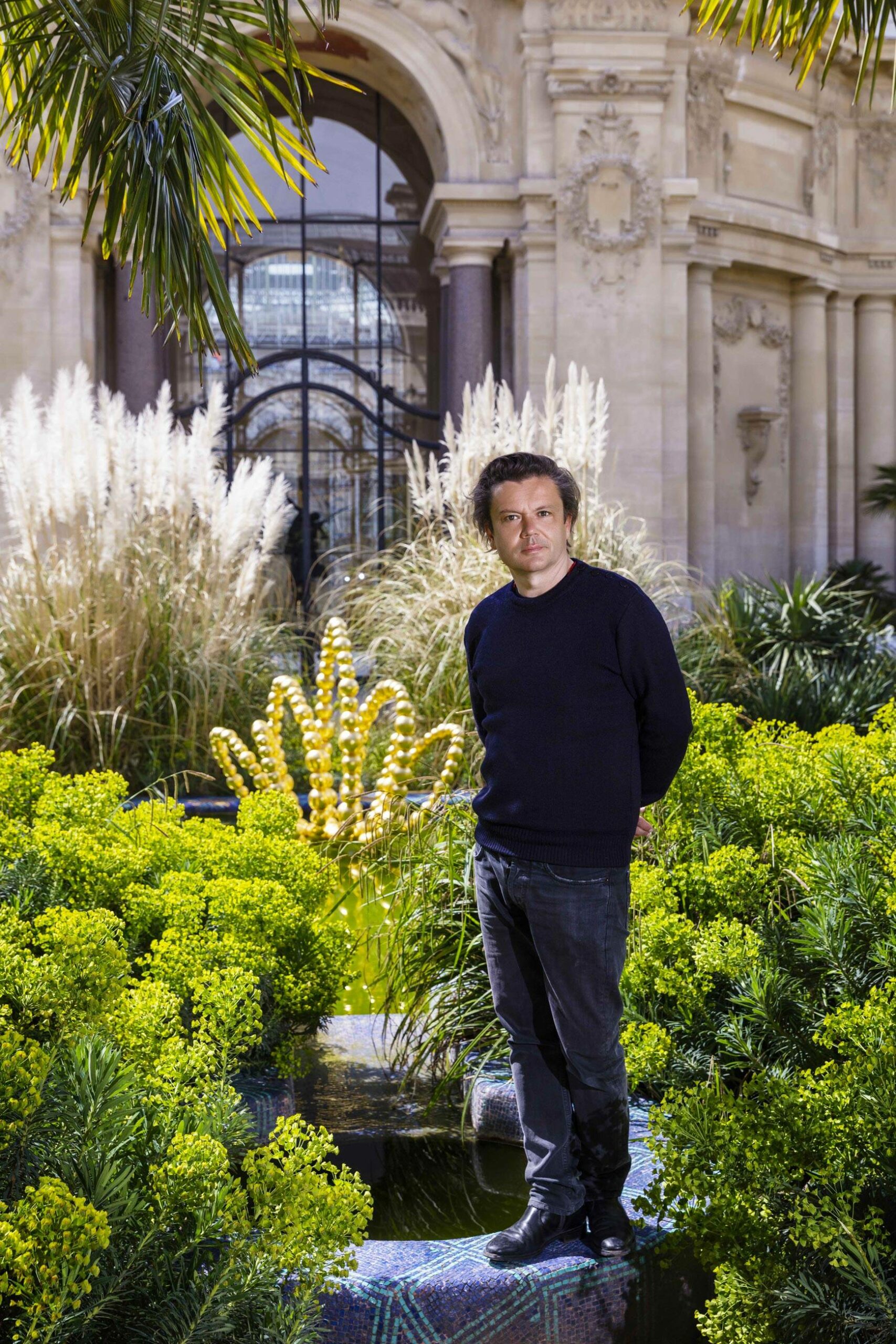
In 70 works, Jean-Michel Othoniel draws an enchanted path at the Petit Palais : his Blue River of shimmering bricks, as soon as you enter the Parisian museum, evokes the vast paved path of the Wizard of Oz. “This idea of staging the building, by dialoguing with the golden gate, forms an invitation to enter. I come to pick up the public in the street and I accompany them on a blue carpet, which puts them in the position of an actor in this exhibition. The Petit Palais was a place designed to amaze people in 1900. I wanted to reactivate this wonder, to give back to the place the power it had at the time to make its audience dream.” explains the artist.
The journey will be dreamlike, illusions numerous from the threshold. In the garden, the gigantic Silver Knots, interlaced with stainless steel beads, reflect the colonnade and the frescoes in a gesture of assumed unreality. “While working on this project, and on the architecture of the Petit Palais, I saw a lot of parallels between the 1900s and the one we live in today, especially in this desire to abstract ourselves from the world. To return to nature, to the gardens. In 1900, when gardens appeared, they were places of wonder and science. They are highly contested in turn-of-the-century civilization because they do not participate in an active society – people who go to gardens immerse themselves in a state of contemplation. By abstracting himself from the world. Today, we are experiencing the same thing : this return to nature, this need to abstract ourselves from the city in order to better return to it.“
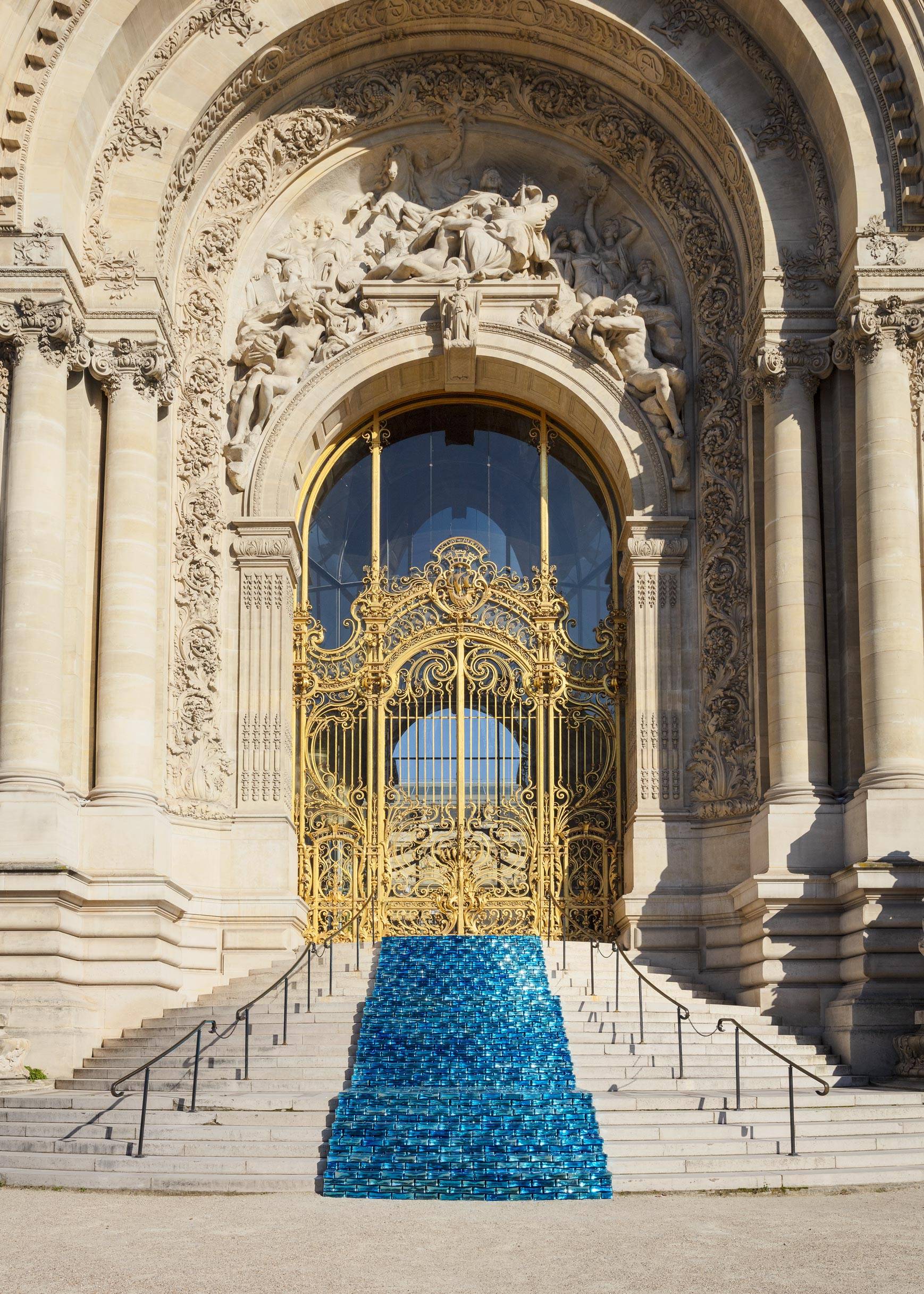
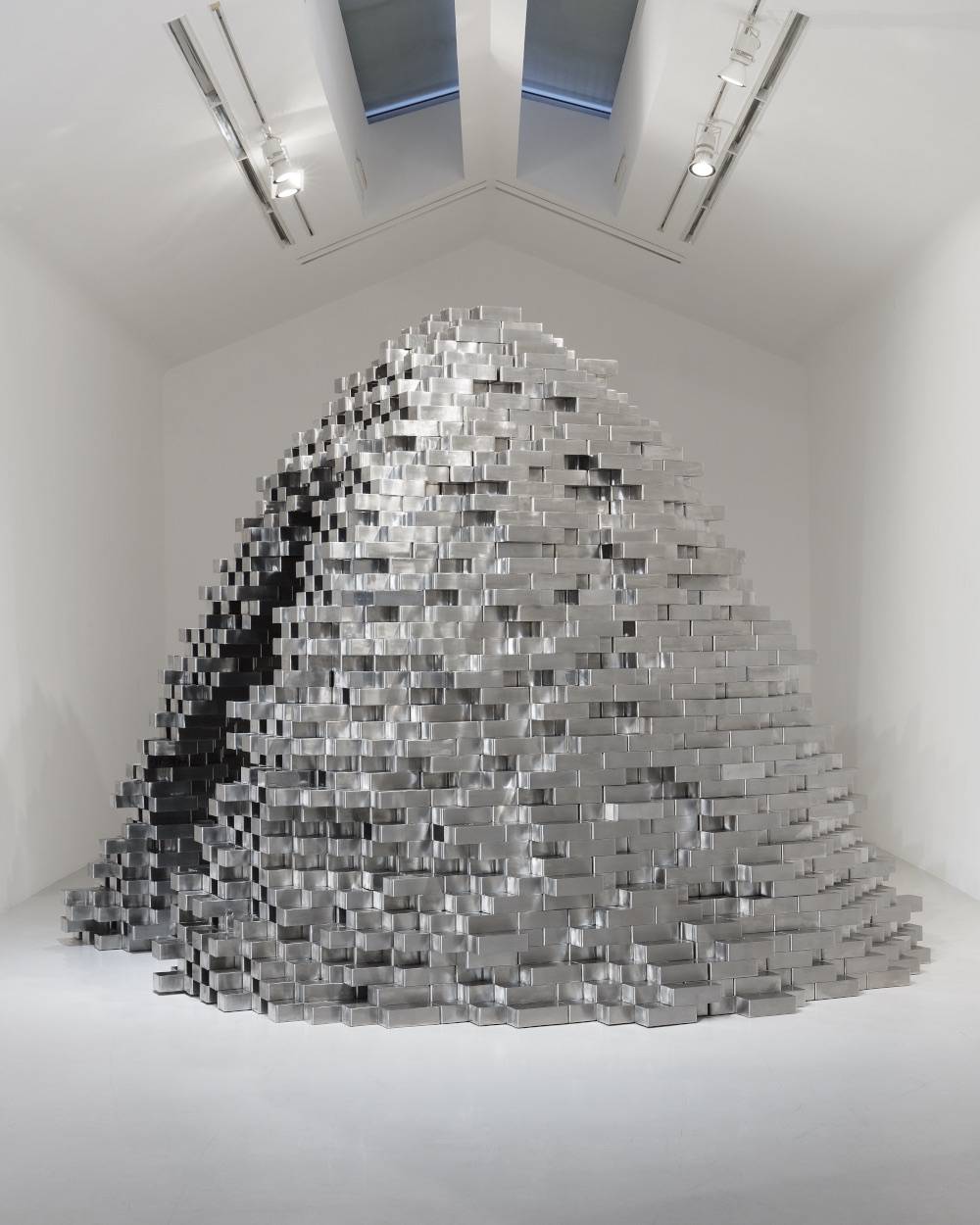
Overlooking Charles Girault’s spiral staircase, his Crown of the Night is reminiscent of the famous Night Owl Kiosk located near the Comédie-Française. Inside, his Agora forms a silver-brick cave – both a hiding place to shelter from the tumult and a protected place to renew the collective dialogue. The light always springs forth, like a deeply spiritual gesture of infinite sweetness. Narcissus’ Theorem, since this is the name given to the exhibition, summons to earth an Olympus now offered to ordinary mortals. For the artist, this Narcissus is not the neurotic flower-man losing himself in his own reflection, but an invitation to the sublimation of himself and the world within their reverberations in a multitude of enveloping surfaces. “In Theorem There is an obvious Pasolinian reference, and, at the same time, a spiritual one. I believe very much in the power of works of art, which allow us to face the world, to abstract ourselves from it, too, to reach a more contemplative state. This beauty is an access to spirituality, to the sacred.“
The vast hall downstairs reveals a surprise. In 2013, Jean-Michel Othoniel discovered that the shapes he was working on were reminiscent of those from the mathematical models of the Argentinian scientist Aubin Arroyo. From their discussion were born the many Wild Knots that populate space, an impressive assembly of pearls evoking DNA and the infinity of its possibilities. As a way for the artist to reconnect with a certain ideal of the Renaissance where art and science formed the same field. On the walls, plays of glass bricks in shimmering colors evoke another unexpected reference, and yet dear to the artist: the compositions of the minimal and conceptual art of Donald Judd or Carl Andre. Here, they take on a mystical dimension. And they remind us that the work of the material (Murano glass making it internationally famous) remains at the heart of this art of beauty. “Beauty is imperfection,” says Jean-Michel Othoniel. I’m very moved by Indian bricks because they are imperfect, they are colors that I can’t control, they are always moving. There is impurity in the glass. There is a small accident. At a very young age, I had already worked on this notion, which in Spanish is called the morbo, which is the strange thing that makes beauty. For example, a boy who has a protruding ear is said to be morbo. It has a kind of strange beauty that is found a lot in Spanish culture. It’s on the side of this beauty that I like to be. A beauty that disturbs, small details that are wrong and that suddenly makes beauty even stronger.“
Le Théorème de Narcisse by Jean-Michel Othoniel, Petit Palais, Paris. Until January 02, 2022.
